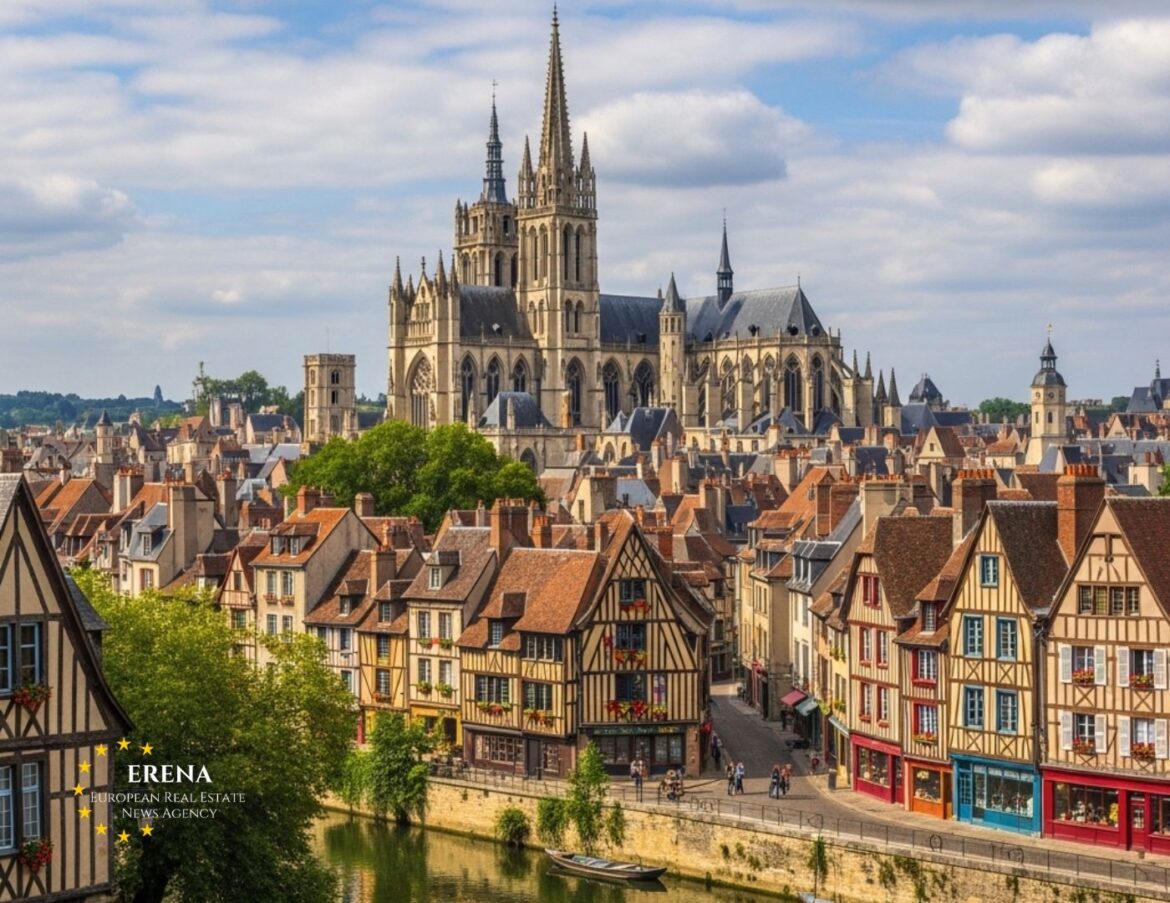Troyes, a charming city in the Grand Est region of France, is often celebrated for its medieval architecture, cobbled streets, and colorful half-timbered houses. But beyond its postcard-perfect image, Troyes is undergoing a quiet transformation — driven by a resilient local economy and a real estate market that is increasingly attracting interest from investors, entrepreneurs, and new residents. As business development continues to flourish, it is reshaping the urban landscape, housing demand, and commercial infrastructure in profound ways.
The Economic Backbone: From Textiles to Logistics
Historically, Troyes was known as the textile capital of France, with its economy rooted in hosiery and knitwear manufacturing. Although this industry has waned, its legacy remains in the city’s industrial culture and workforce.
In recent decades, Troyes has diversified its economy significantly:
- Logistics and warehousing, thanks to its strategic location near the A5 highway
- Retail and outlet commerce, anchored by McArthurGlen Troyes — one of Europe’s largest outlet centers
- Tourism and cultural heritage
- Higher education and research, led by the University of Technology of Troyes (UTT)
This economic diversification has created a favorable environment for job creation and population stability, key factors that influence real estate dynamics.
Business Growth Driving Urban Transformation
In the past five years, the city has witnessed a steady growth in small and medium-sized enterprises (SMEs). Municipal incentives, including low-interest business loans and property tax breaks, have fueled the rise of:
- Artisan shops and local brands
- Creative studios and coworking spaces
- Boutique hotels and independent cafés
- Green tech and digital start-ups
This surge in entrepreneurship is directly linked to the increased demand for residential and commercial property, especially in central and revitalized neighborhoods.
Real Estate Prices: Attractive and Stable
Troyes remains one of the most affordable mid-sized cities in France, especially when compared to urban hubs like Lyon or Strasbourg. As of 2025, average property prices are as follows:
- City center apartments: €1,800 to €2,500 per m²
- Detached houses in suburban areas: €1,600 to €2,200 per m²
- New developments: starting at €2,800 per m²
Rental prices are equally competitive:
- One-bedroom apartment: €450–€600 per month
- Two-bedroom apartment: €650–€800 per month
- Single-family house: from €850 per month and up
Such price levels appeal to first-time buyers, families, students, and long-term investors.
Commercial Real Estate Trends
Troyes is also seeing steady growth in commercial real estate, especially in these sectors:
- Retail and mixed-use zones in neighborhoods like Saint-Julien and city outskirts
- Warehouse and distribution centers along logistics corridors
- Boutiques, restaurants, and concept stores in the revitalized old town
- Modern office spaces and coworking hubs, especially near university zones
Prices for commercial properties range from €1,500 to €3,000 per m², depending on location and quality, offering good ROI for small businesses and institutional investors alike.
Urban Planning: Renovation Meets Sustainability
The city government has embraced an ambitious urban redevelopment strategy that balances heritage conservation with modern infrastructure:
- Restoring historic buildings and repurposing them as lofts, studios, and coworking spaces
- Expanding green areas and riverside promenades
- Encouraging energy-efficient construction and renovation
- Improving transport links, including bus services and cycling infrastructure
These efforts not only raise the city’s livability index but also increase property values in target areas.
Tourism and the Rise of Short-Term Rentals
Troyes is a growing tourist destination, particularly among visitors interested in history, architecture, and outlet shopping. This has led to a booming short-term rental market, especially on platforms like Airbnb.
Popular property types include:
- Renovated old town apartments with historical features
- Modern flats with views of the cathedral or town squares
- Boutique guesthouses in quiet pedestrian areas
Average nightly rates for short-term rentals range from €60 to €130, depending on the season, size, and location. This makes Troyes an appealing market for property owners seeking holiday rental income.
University and Student Housing Demand
The presence of the University of Technology of Troyes (UTT) has a significant impact on the local housing market. The demand for student accommodation remains consistent year-round, particularly in neighborhoods like Chartreux and Saint-Martin.
Investors are increasingly targeting student residences and small units, offering affordable options with good turnover and occupancy rates.
Challenges and Constraints
Despite its positive trajectory, the Troyes real estate market faces several challenges:
- Limited availability of new residential stock
- Preservation restrictions in the historic core, which limit large-scale developments
- Pressure on rental markets from short-term letting
- Infrastructure strain in newly developed zones
To mitigate these issues, the city is investing in new housing districts, particularly in the southwest, with integrated services, schools, and public transport access.
Outlook: Growth with Balance
Troyes offers a unique blend of affordability, lifestyle, and investment potential. Key strengths include:
- Competitive property prices
- A stable and diversified economy
- A growing entrepreneurial ecosystem
- Government incentives for sustainable urban renewal
These factors combine to make Troyes an emerging hotspot for property investors seeking medium-to-long-term gains with manageable risk.
Conclusion
Troyes demonstrates how a vibrant local economy can shape and revitalize the real estate landscape. As SMEs expand, tourism flourishes, and infrastructure improves, the city is evolving into a well-rounded destination for living, working, and investing.
With strategic urban planning, cultural charm, and continued economic momentum, Troyes is well-positioned to attract both residents and capital in the years ahead — reaffirming the vital link between business vitality and real estate development.

